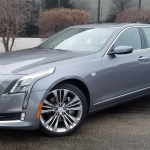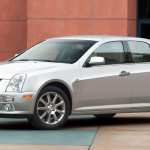
 It’s not just about ROI any more.
It’s not just about ROI any more.
Back in the 1970s, diesels became attractive for passenger vehicles due to their superior fuel economy, and in some cases, the lower price of diesel fuel. As diesels often cost significantly more than a gas engine – and also suffered from noisy operation and meager power output – it was a diesel’s fuel-cost savings over time that accounted for their appealing Return On Investment.
But lower per-mile fuel costs are no longer a diesel’s only attraction.
Since those early years, the wonders of turbocharging and sophisticated electronics have turned those clattering 98-lb weaklings into smooth Charles Atlas powerhouses, and today, turbodiesels are coveted as much for their humongous torque output and subsequent pulling power as for their fuel efficiency.
Yet there’s another side to it as well.
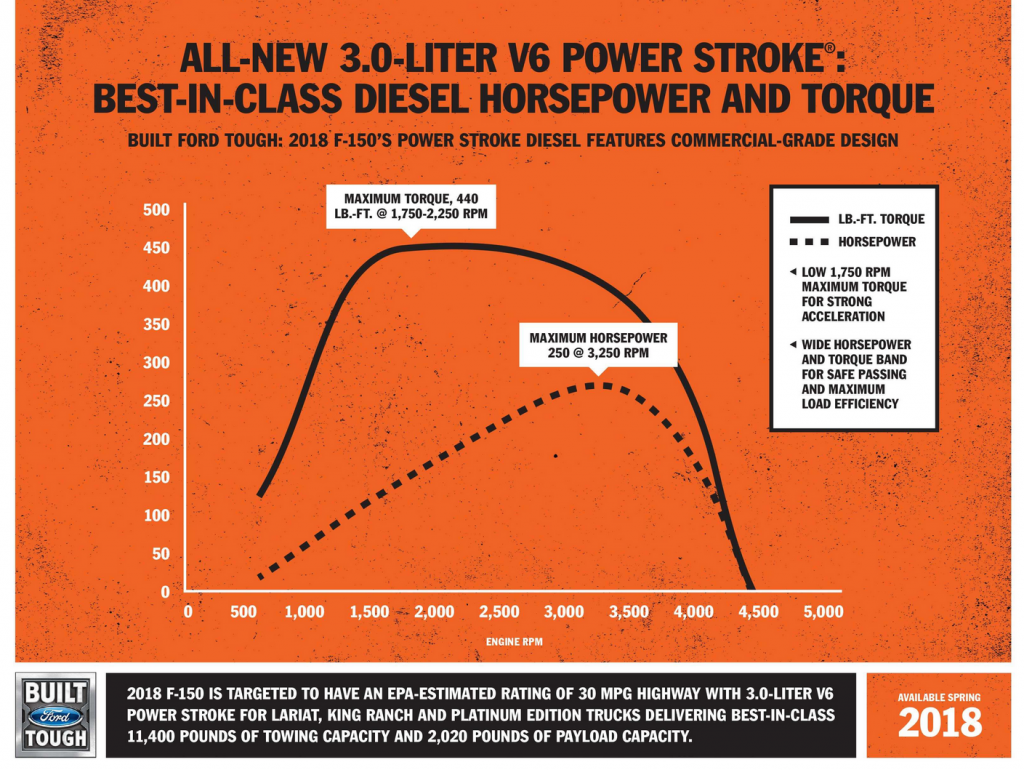
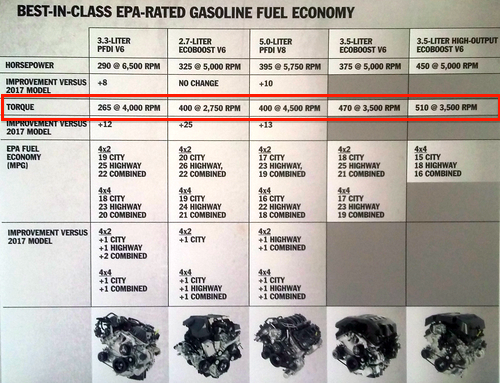
In a rather strange turn of events, diesels – at least in big pickups – have become a status symbol of sorts. Maybe it’s their raw power, maybe it’s their connection to the brawny semi-tractors of 18-wheeler fame, but the vehicles that carry them often announce the fact with prominent badges and seemingly amplified exhaust notes.

In recent times, turbodiesels had been the sole province of ¾- and 1-ton pickups until just a couple of years ago, when Ram introduced a 3.0-liter V6 turbodiesel in its ½-ton 1500s. With that, the race was on, and Ford enters the fray with its own 3.0-liter V6 turbodiesel due out in May carrying the same Power Stroke moniker as the bigger V8 turbodiesels in the company’s heavy-duty pickups.
Rather oddly, the addition of the 3.0-liter Power Stroke diesel makes for a total of six engine choices for the Ford F-150, and perhaps even more oddly, four of those are turbocharged. (My, how times have changed.) All are now mated to a 10-speed automatic transmission, which is a particular boon to the turbodiesel, as it provides short gaps between gears for an engine that operates in a relatively narrow rpm range compared to a typical gas-powered one.
To that last point, we drove an F-150 Power Stroke laden with a 6500-lb boat trailer – which more than doubled its overall weight yet was nowhere near the vehicle’s maximum towing capacity – and even under full-throttle acceleration, the engine never revved past 3500 rpm … even though the redline sits at 4500. And one look at the engine’s power curve explains why: The torque peak of 440 lb ft is reached at 1750 rpm, tables for a bit, then starts to decline rapidly at about 3500 rpm, which is also about where peak horsepower is produced (250 at 3250 rpm). So – counting from a 600-rpm idle – the operating window isn’t even 3000 rpm wide. By comparison, the F-150’s available 5.0-liter gas V8 produces 400 lb ft of torque at 3850 rpm and 395 horsepower at 5750 rpm, making for more than a 5000-rpm operating window. Note that while the V8’s horsepower is significantly higher due to the higher revs it can attain, peak torque is both lower and occurs much further up the rpm range, which is what makes turbodiesels so attractive for heavy-duty hauling.
Well, that and fuel economy. According to Ford, 2WD F-150s with the Power Stroke turbodiesel are EPA rated at 22 city/30 highway/25 combined, giving it a 5- to 7- mpg edge over 2WD models with the 5.0-liter V8. (4WD figures for the Power Stroke are 20/25/22.) And indeed, under a dedicated fuel-economy loop that included stops, starts, hills, traffic, and a bit of highway driving, the trip computer had us at 27.9 mpg.
Tons of Torque: A Guide to Pickup Truck Diesels
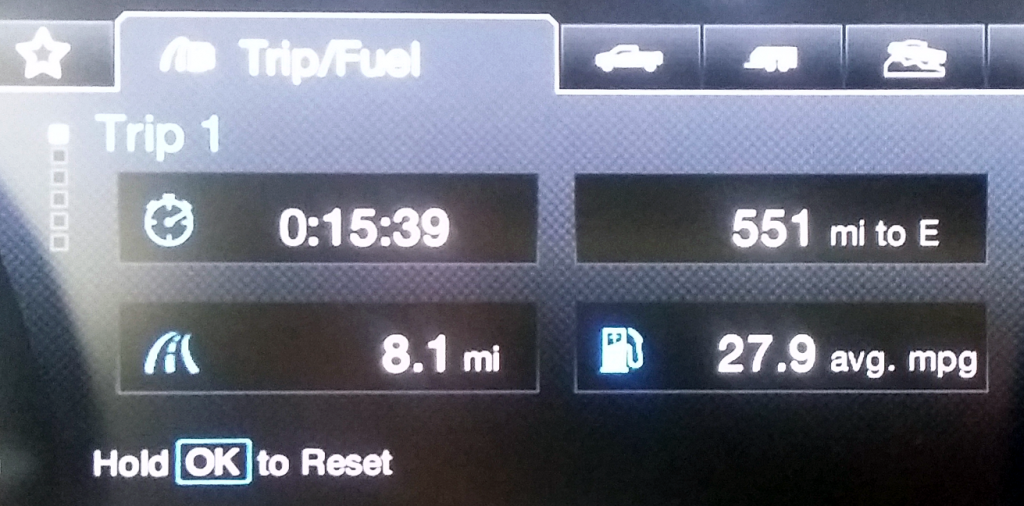
One of the first things we noticed when driving the Power Stroke was what wasn’t noticed: the typical diesel engine clatter. In fact, we could hardly hear the engine at all inside the cab except under acceleration, and even then, it was quite subdued.
In normal driving, you really can’t tell you’re piloting a turbodiesel unless you really listen for the distinct engine sound. But not so if you decide to floor the throttle from a stop. In that scenario, there was a brief delay before anything happened, then the truck moved away timidly, and then – about 20 feet out – it suddenly began to accelerate strongly. For the most part, this is rather typical turbo behavior, though an F-150 we drove earlier with the 2.7-liter V6 EcoBoost (turbocharged) gas engine seemed to respond more quickly, and one with the available 5.0-liter gas V8 virtually jumped off the line.

One of the benefits of turbocharged engines – whether gas or diesel – is that they tend to lose less power than normally aspirated (non turbocharged or supercharged) engines at altitude. The general rule for normally aspirated gas engines is that power drops off by 3% for every 1000 feet of elevation due to the increasingly lower level of oxygen in the air as you go up. (Oxygen only makes up about 20% of the air we breath at sea level, and it’s oxygen that combines with fuel in a fairly set ratio to make the “bang.”) By contrast, turbocharged engines lose power at only about half that rate, because the turbocharger can be set to force more air into the engine at altitude to help make up for the fact that the air contains less oxygen.
But there is a stumbling block to the Power Stroke. The turbodiesel carries a $4000 price premium over the 2.7-liter EcoBoost V6 (which produces the same 400 lb ft of torque as the gas V8 but is down only 2-4 mpg from the turbodiesel), and a $3000 premium over the 5.0-liter V8. Though the math varies a lot due to changing fuel prices, with gas and diesel fuel in parity at $3 per gallon, it would take about 80,000 miles to pay back the difference over the 5.0-liter V8, but about 180,000 miles to pay it back over the 2.7-liter EcoBoost V6.
But of course, there are more benefits to the Power Stroke than just fuel economy … not the least of which is being able to boast that your pickup carries “Big Rig” power.
Check out our Large Pickup Truck Best Buys


